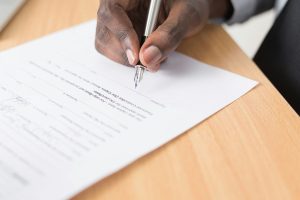The aerospace industry often deals with complex transactions, and overdue payments on exported components can significantly impact cash flow and operations. To address this, a structured approach to debt recovery is essential. The three-phase recovery system provides a clear pathway for collecting overdue payments, from initial contact to potential litigation. This article outlines the key steps involved in this system, effective communication strategies with debtors, the legal processes associated with debt recovery, and the financial considerations that companies must take into account when pursuing overdue payments.
Key Takeaways
- The three-phase recovery system offers a structured approach to debt collection, starting with comprehensive skip-tracing and multiple contact methods in Phase One.
- Legal escalation in Phase Two involves attorney-drafted demand letters and persistent communication attempts to settle the debt before recommending litigation.
- Phase Three includes a thorough investigation of the debtor’s assets and the viability of recovery, leading to a recommendation on whether to close the case or proceed with litigation.
- Effective debtor communication strategies emphasize the use of various contact methods, appropriate timing, and the crucial role of persuasion and negotiation.
- Financial considerations in debt collection involve assessing legal action costs, analyzing the debtor’s asset recovery potential, and understanding collection rates and fee structures.
Understanding the Three-Phase Recovery System
Phase One: Initial Contact and Skip-Tracing
The first 24 hours are critical in the recovery system. Immediate action is taken to send out the initial letter and begin the skip-tracing process. This phase is about establishing contact and laying the groundwork for resolution. Daily attempts to reach the debtor include a mix of phone calls, emails, and texts.
- Initial letter sent via US Mail
- Comprehensive skip-tracing to update debtor information
- Persistent contact attempts for 30 to 60 days
The goal is to engage the debtor and secure a payment arrangement swiftly. If these efforts do not yield results, the case escalates to Phase Two, involving legal professionals.
Understanding the debtor’s status is crucial for determining the next steps. If the initial phase fails to produce a resolution, the structured 3-phase recovery system ensures a seamless transition to more assertive measures.
Phase Two: Legal Escalation and Attorney Involvement
When initial recovery efforts falter, legal escalation becomes imperative. At this juncture, a specialized attorney within the debtor’s jurisdiction is engaged. The attorney’s first action is to draft a demand letter to the debtor, signaling the seriousness of the situation. This is followed by persistent attempts to establish contact, leveraging the weight of legal stationery to underscore urgency.
- Immediate drafting of demand letters
- Persistent contact attempts by attorney
- Assessment of debtor’s willingness to resolve the debt
The involvement of an attorney often marks a turning point in the recovery process, as it introduces a formal legal dimension to the efforts.
Should these measures not yield the desired resolution, a detailed report outlining the challenges encountered and subsequent recommendations is prepared for the creditor. This report is crucial in deciding whether to proceed to the final phase of litigation or to close the case, especially in sectors like aerospace component exports where quick resolution is vital.
Phase Three: Final Recommendations and Litigation Options
When the recovery system reaches Phase Three, a critical decision point emerges. If the debtor’s assets suggest a low recovery likelihood, we advise case closure—no fees incurred. Conversely, choosing litigation necessitates upfront costs, typically $600-$700, for court proceedings.
Deciding against legal action allows for claim withdrawal or continued standard collection efforts. Opting for litigation involves initial legal fees, with the promise of aggressive pursuit for all monies owed.
Should litigation prove unsuccessful, rest assured, you owe nothing further. Our commitment to a no-recovery, no-fee policy stands firm.
Our fee structure is straightforward:
- For 1-9 claims, rates vary from 30% to 50% of the amount collected, based on the age and size of the account.
- For 10+ claims, the rates are slightly reduced, reflecting our volume discount.
These rates ensure that our interests are aligned with your success in debt recovery.
Strategies for Effective Communication with Debtors
Utilizing Multiple Contact Methods
Diversifying contact methods is crucial in debt recovery. Emails, phone calls, and physical letters form a triad of traditional communication, but don’t overlook modern channels like text messages and faxes. Each method has its own set of advantages and can reach debtors at different touchpoints.
Persistence is key. A debtor may ignore an email but respond to a phone call. Varying the approach can prevent evasion and increase the chances of a successful contact.
Timing also plays a role. Initial attempts should be frequent and varied to establish urgency. Here’s a snapshot of a typical contact schedule:
- Day 1: Send the first demand letter via mail.
- Day 2: Follow up with an email outlining the debt details.
- Day 3: Make the first phone call attempt.
- Day 5: Send a text message reminder.
- Repeat the cycle with increasing intervals.
Remember, the goal is to maintain a balance between persistence and professionalism, ensuring the debtor is aware of the seriousness of the situation without feeling harassed.
Frequency and Timing of Communication Attempts
The frequency and timing of communication with debtors can significantly impact the success of debt recovery efforts. Consistent and strategic contact is key to maintaining pressure and encouraging payment.
- Initial contact should be made promptly after a payment becomes overdue.
- Subsequent attempts should be regular but not so frequent as to be considered harassment.
- Timing should be varied to increase the likelihood of reaching the debtor.
The first 30 to 60 days are critical, with daily attempts recommended to maximize engagement.
Understanding the debtor’s schedule and preferred communication methods can also inform the timing of attempts, ensuring they are both noticed and taken seriously.
The Role of Persuasion and Negotiation
In the realm of overdue payments, the art of persuasion and negotiation is paramount. Effective communication strategies can transform a standoff into a settlement. It’s not just about demanding payment; it’s about understanding the debtor’s position and finding a mutually beneficial resolution.
- Establish rapport and trust
- Listen actively to debtor concerns
- Offer flexible payment solutions
- Highlight the consequences of non-payment
Persistence coupled with empathy can often lead to a breakthrough in even the most challenging cases.
Remember, a debtor more often responds positively to a respectful approach rather than aggressive demands. It’s a delicate balance between firmness and understanding that can tip the scales in your favor.
Navigating Legal Processes in Debt Recovery
Drafting Demand Letters and Legal Notices
The art of drafting demand letters and legal notices is a critical step in the aerospace component export recovery system. These documents serve as the formal request for payment and set the stage for potential legal action.
- First, ensure the letter is clear, concise, and includes all necessary details such as the amount owed, due date, and consequences of non-payment.
- Second, maintain a professional tone while expressing the urgency of the situation.
- Third, consider the debtor’s jurisdiction when drafting notices, as legal requirements may vary.
Timely and well-crafted demand letters can significantly increase the likelihood of voluntary payment, reducing the need for further legal steps.
Remember, the goal is to prompt action without escalating to litigation, which can be costly and time-consuming. If the debtor remains unresponsive, the next phase involves more direct legal intervention.
Understanding the Litigation Procedure
Navigating the litigation process in aerospace component exports requires a clear understanding of the steps involved. Attorney-led debt recovery is a critical phase, where legal expertise can make a significant difference. The procedure typically begins with authoritative demands for payment, followed by strategic negotiation efforts. If these initial attempts are unsuccessful, litigation may become the necessary course of action.
Evaluation of viability is essential before proceeding with legal action. This includes a thorough assessment of the debtor’s assets and the associated costs of litigation. Collection rates are not uniform; they vary based on specific account details, such as the age of the account and the amount owed.
The decision to litigate should be made after careful consideration of the potential recovery against the legal expenses incurred.
Here’s a quick overview of the potential costs and collection rates:
| Age of Account | Collection Rate |
|---|---|
| Under 1 year | 30% – 27% |
| Over 1 year | 40% – 35% |
| Under $1000 | 50% |
| With Attorney | 50% |
Remember, the goal is to recover the maximum amount possible while minimizing expenses and legal risks.
Assessing the Viability of Legal Action
Before leaping into litigation, a cost-benefit analysis is crucial. Maximize debt recovery with tailored strategies, weighing costs and legal implications. Consider litigation vs. standard methods based on collection rates and potential outcomes.
Litigation is not always the answer. Assess the debtor’s assets and the likelihood of successful recovery. If the probability is low, alternative resolutions may be more cost-effective.
- Evaluate the debtor’s financial status
- Estimate the legal costs involved
- Compare potential recovery against expenses
Deciding on legal action requires a strategic approach to ensure the best financial outcome.
Remember, litigation can be expensive and time-consuming. It’s essential to balance the immediate costs against the long-term benefits of recovering the debt.
Financial Considerations in Debt Collection
Evaluating the Costs of Legal Action
Before proceeding with litigation, it’s crucial to weigh the benefits against the costs. Legal action entails upfront expenses, such as court costs and filing fees, typically ranging from $600 to $700. These costs are necessary for the attorney to initiate a lawsuit on your behalf.
Recovery potential should be assessed, considering the debtor’s assets and the likelihood of successful collection. If the evidence suggests a low probability of recovery, it may be more prudent to close the case, avoiding unnecessary expenses.
Deciding on litigation requires careful analysis of both the financial implications and the debtor’s ability to pay.
Here’s a quick overview of the fee structure for different scenarios:
- Accounts under 1 year: 30% (1-9 claims) or 27% (10+ claims) of the amount collected.
- Accounts over 1 year: 40% (1-9 claims) or 35% (10+ claims) of the amount collected.
- Accounts under $1000: 50% of the amount collected.
- Accounts placed with an attorney: 50% of the amount collected.
Analyzing Debtor’s Asset for Recovery Potential
Before initiating legal action, a thorough analysis of the debtor’s assets is crucial. Identifying tangible and intangible assets can determine the likelihood of successful recovery. This step is not just about feasibility; it’s about strategic financial decision-making.
- Evaluate debtor’s property, equipment, and inventory.
- Investigate bank accounts and investment holdings.
- Consider intellectual property and potential revenue streams.
Assessing the debtor’s financial health provides insight into the recovery potential. It’s a balance between the owed amount and the debtor’s capacity to pay.
If assets are insufficient, pursuing legal action may be futile. Conversely, substantial assets can justify the costs involved. Always weigh the expected recovery against the legal expenses to ensure a cost-effective approach.
Collection Rates and Fee Structures
When it comes to debt collection in aerospace component exports, understanding the fee structures and collection rates is crucial for making informed decisions. The rates often vary depending on the age and size of the account, as well as the number of claims submitted.
For instance, accounts under one year in age may incur a 30% fee on the amount collected, while older accounts could see a 40% fee. Smaller accounts under $1000.00 are typically charged at a higher rate of 50%. It’s important to note that accounts placed with an attorney also carry a 50% fee, regardless of other factors.
Deciding between closure and litigation involves assessing the potential for recovery against the costs involved. Closure may be recommended when recovery is unlikely, incurring no fees. However, opting for litigation requires upfront legal costs, which can range from $600 to $700.
Here’s a quick breakdown of the fee structure:
| Claims Submitted | Accounts < 1 Year | Accounts > 1 Year | Accounts < $1000 | Attorney Involved |
|---|---|---|---|---|
| 1-9 | 30% | 40% | 50% | 50% |
| 10+ | 27% | 35% | 40% | 50% |
Remember, these rates are tailored to be competitive and are designed to align with the complexity and effort required to recover the funds.
Navigating the complexities of debt collection requires expertise and a dedicated partner. At Debt Collectors International, we offer specialized solutions across all industries, ensuring maximum recovery for your outstanding debts. Our experienced team is ready to assist with dispute resolution, skip tracing, asset location, and judgment enforcement. Don’t let unpaid debts affect your financial stability. Visit our website now to request a free collection quote and take the first step towards reclaiming what’s yours.
Frequently Asked Questions
What steps are taken within the first 24 hours of initiating Phase One of the Recovery System?
Within 24 hours of placing an account, a series of four letters are sent to the debtor, skip-tracing and investigations are conducted to gather financial and contact information, and our collector begins daily attempts to contact the debtor via phone, email, text, fax, and more for the first 30 to 60 days.
What happens if the debtor does not respond to initial collection attempts in Phase One?
If all attempts to resolve the account fail in Phase One, the case is escalated to Phase Two where it is forwarded to one of our affiliated attorneys within the debtor’s jurisdiction for legal intervention.
What actions does the affiliated attorney take during Phase Two?
The attorney will draft demand letters on law firm letterhead and attempt to contact the debtor via telephone and letters. If these attempts fail, a recommendation for the next step is sent to the client.
What are the possible recommendations at the end of Phase Three?
The recommendation can either be to close the case if recovery is unlikely, or to proceed with litigation if there’s a possibility of recovering the debt.
What are the costs associated with proceeding to litigation in Phase Three?
If litigation is recommended and the client agrees, they are required to pay upfront legal costs such as court costs and filing fees, typically ranging from $600 to $700, depending on the debtor’s jurisdiction.
How are collection rates determined and what are the typical percentages charged?
Collection rates are competitive and tailored, depending on the number of claims and age of the accounts. Rates can vary from 27% to 50% of the amount collected, with different rates for accounts under or over one year in age, under $1000, or placed with an attorney.





